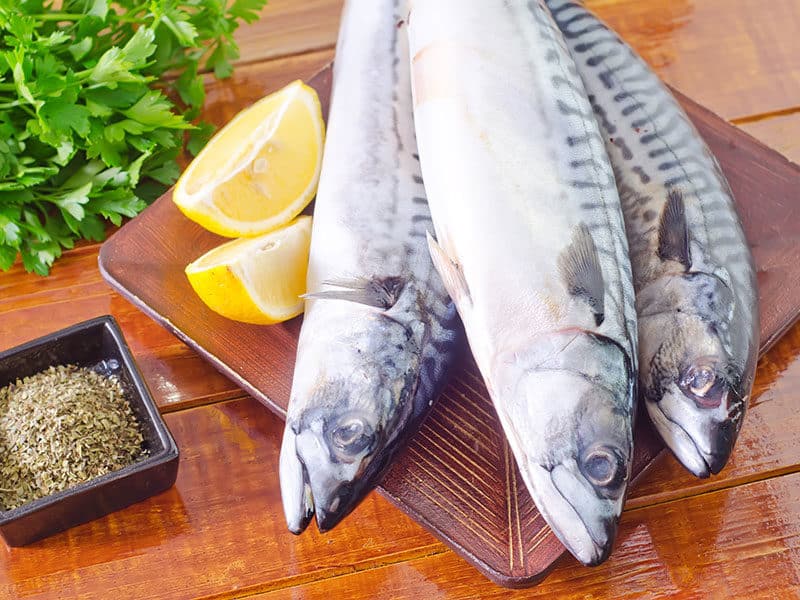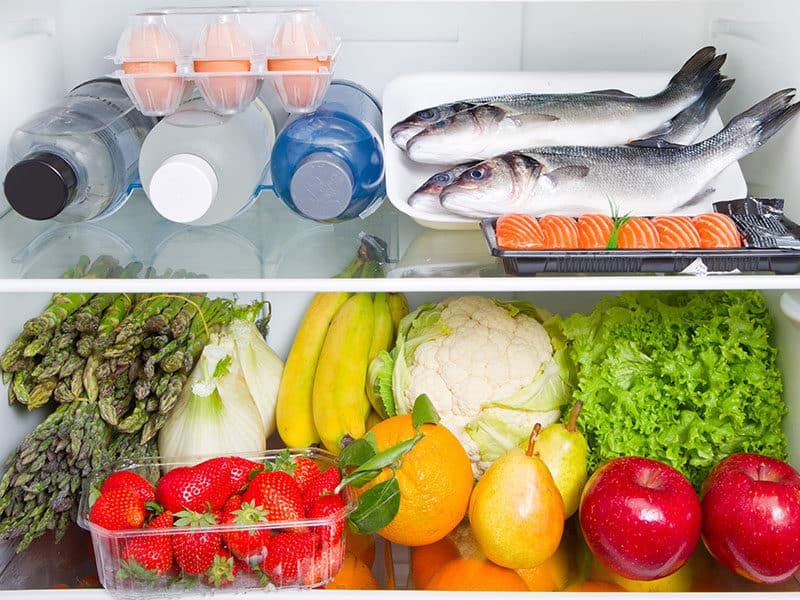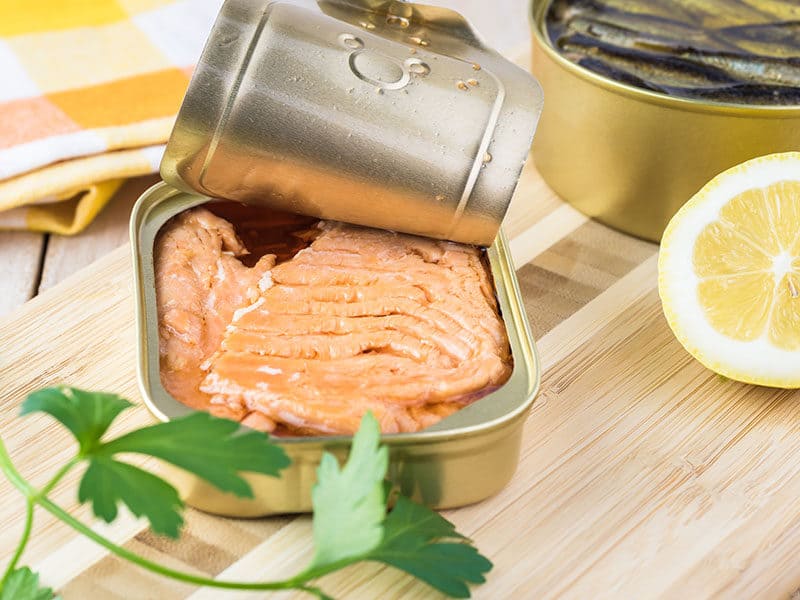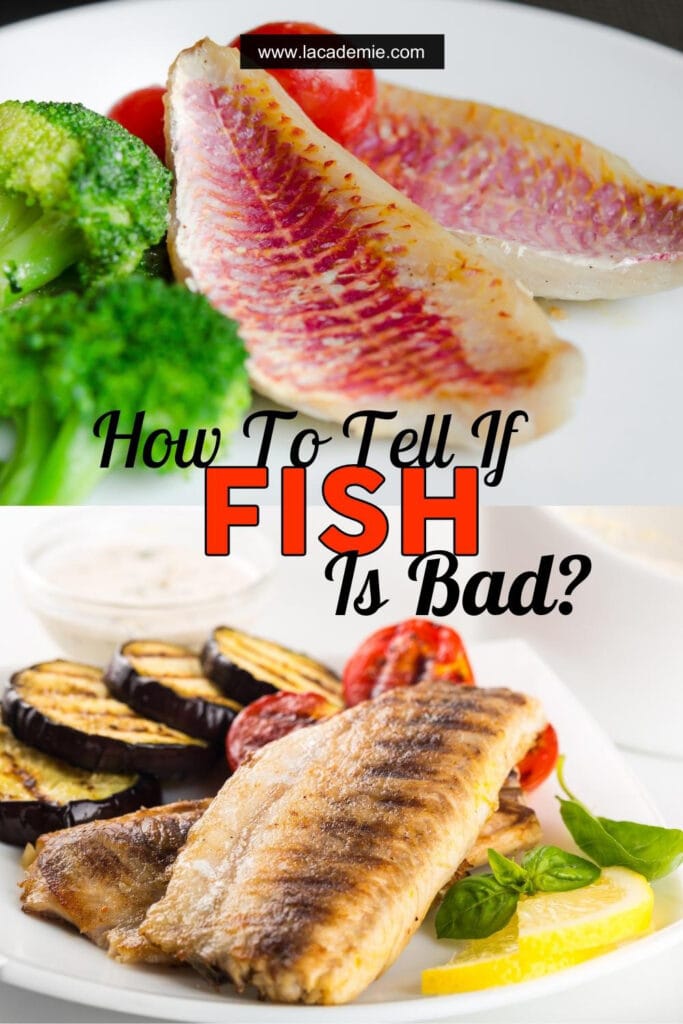
How to tell if fish is bad? Well, you will need to consider a few factors like the sell-by date printed on the package, where the fish has been kept, and the look and smell of the fish.
These things can reveal if a fish is spoiled. To avoid food poisoning, it’s recommended to throw away fish once it shows any visual signs of spoiling. In today’s article, I will teach you all about fish.
I will share tips on how to determine if fish it’s spoiled and how to preserve raw fish properly. That being said, let’s learn how to detect any fishy business with your fish in the future.
How To Tell If Fish Is Bad?
Before spending all your time on the required steps to smoke fish or deep-fry it, you might want to check if your fish is still fresh. Usually, your senses are the most reliable tool. Some common signs of a spoiled fish include slimy, milky flesh (slipper, thick coating), and a fishy smell.
This is difficult since fish is slimy and smelly by nature. However, these signals become more highlighted when fish has gone bad. Fresh filets should shine like they just came right out of the water.
First, sniff the fish. If it’s fresh, it should smell like the ocean but not fishy. And if the fish has a bloodline, it shouldn’t be brown but red. Additionally, the scales should be intact and the eyes clear.
It’s suggested to use fresh fish within 36 hours of buying. Always practice food safety and enjoy your fish before its shelf life has expired. Follow the next 3 methods on how to tell if fish is bad.
Method 1: Read The Sell-by Date
First, read the sell-by date. Toss refrigerated raw fish 2 days after the sell-by date. Raw fish doesn’t last very long in a fridge. And it starts to spoil soon after the sell-by date.
If you would like to postpone the expiration of a raw refrigerated fish, place it in the freezer. If the fish is labeled with a use-by date instead of a sell-by date, avoid keeping it past that date.
The use-by date means that fish will start to spoil if it’s not consumed by the printed date. If you cooked your fish or bought cooked fish, and then stored it in the fridge in an airtight container, it’s good for 5 or 6 days past the sell-by date. After that period, I’m afraid it will need to be thrown away.
If you know beforehand that you won’t be using the fish before the expiration date, delay the expiration by placing it in your freezer with a safe freezer food container.
If you’re going to toss out the packaging once it’s done, don’t forget to take note of the sell-by date and label it the right way. Proper storage will preserve its flavor.
Whether it’s cooked or raw, frozen fish will remain edible for much longer than refrigerated fish, unless it’s popular smoked salmon. Even in a freezer, this product will only last for a few months.
It usually lasts between 3 and 6 months. If you purchased salmon raw or have already cooked it, you can always freeze it yourself using air-tight plastic bags or layers of plastic wrap.
Method 2: Inspect The Fish Carefully
As fish grows old and starts to spoil, its exterior will become wetter and eventually grow a slimy layer. This is the first sign that your fish has gone bad. Once it has completely spoiled, the layer will feel dense and slippery to the touch. Toss out raw fish as soon as you see this sign.
Cooked fish, on the other hand, won’t grow a mushy layer, even after it’s started to spoil. The next step is sniffing the fish. As you probably know, both cooked or raw fish smell like fish.
However, refrigerated fish that has started to spoil will have a strong fish smell. And as time goes by, it’s going to get worse. The smell will turn into the well-known gross smell of rotting meat.
You should also examine the raw fish for a strange milky color. Typically, fish meat is either white or light pink with a thin film of liquid. As the refrigerated or fresh fish ages and begins to spoil, the meat will gain a milky and glossy color. Certain parts will also develop a grey- or bluish tint, so be aware.
Your fish won’t develop a glossy and milky color if you’ve already cooked it. This sign applies only to raw fish. Last but not least, check your fish for signs of freezer burn. This sign appears if you’ve kept your fish in the freezer for +9 months. Look for discolored patches and crystallized peaks of ice.
If you notice this sign, discard the food immediately. It’s technically still edible and won’t make you sick. However, why risk it? Also, it’s probably flavorless with a grainy texture.
Method 3: Identify Expired Salmon
Pay attention to the white lines in the meat. This type of fish unlike other fish is recognized by the white thin lines that separate the layers of flakes of the meat. They indicate that the fish is still edible. If those lines have turned a more gray color or vanished, discard the fish immediately.
Next, press the fish to see if it’s still hard. Fresh, edible salmon should be hard to the touch. If the fish in your fridge has become mushy, squishy, or soft in texture, it’s probably spoiled.
The white lines between the flakes of this fish can represent its hardness in addition to its freshness, so once they’re faded, the salmon will get mushy. Lastly, look for any discoloration.
Unlike other fish, as salmon ages and starts to spoil, it will develop some discolorations. Inspect the top of the fish. If you notice any spots that aren’t the standard healthy pink color, toss out the fish. Most of the discolorations will be dark. But spoiled salmon can also have white-ish spots.
Watch this video to know more:
How Do You Preserve Fresh Fish?

First and foremost, the fish should be cut and cleaned as soon as it’s caught. However, if you’re not able to do that right away, a cooler with ice should be waiting for the freshly caught fish.
There should be a false base in the bottom of the cooler so the melted ice drains away from the fish. The fish shouldn’t be allowed to float in the water. Otherwise, it will absorb water.
The water will alter the texture and taste of the meat. If there’s no false base and you’re far from home, stop on the way home to drain the water. Also, wash your hands before and after catching the raw meat to stop the transmission of food-borne illness bacteria.
Additionally, wash the raw fish. This will remove any excess slime and dirt. For the cleaning process, you will need a lot of water and a sharp knife. Wash the raw fish thoroughly with cold running water before cutting it.
Larger fish can be sliced into filets and steaks for easier cooking. And remember that the thickness also decides fish frying time in a deep fryer.
For the freezing process, fish is labeled as either lean or fat. This is determined by the amount of fat in the meat. Fat fish includes salmon, tuna, trout, and mackerel. Lean fish, on the other hand, includes most freshwater fish.
To keep the quality of the freezer stored fish, pretreat it before freezing. Lean fish should be submerged in a brine of 1/4 cup salt to 1 quart of cold water for 20 seconds. This will harden up the flesh and lower the amount of water loss from thawing. The fatty type should be submerged for 20 seconds.
Make a mix of 1 quart of cold water and 2 tablespoons of crystalline ascorbic acid for fat fish. Doing this will control flavor change and rancidity. Then, follow the next fish freezing methods.
Watch this video to know more:
3 Methods of Packing Fish for Freezing
Freezing fish is highly important to keep your catch in top shape. However, proper packing for freezing is even more important. Here are 3 methods on how to pack your fish properly for freezing.
Method 1: Lemon-Gelatin Glaze
Combine 1 3/4 cups of water and 1/2 cup lemon juice. Apply 1 packet of unflavored gelatin in 1/2 cup of the lemon juice water solution. Heat the rest of the solution to boiling.
Add the gelatine mix into boiling liquid. Let it cool down at room temperature. Dip the fish into the mix. Drain, wrap it in water-vapor-resistant packaging, and put it in the freezer.
Method 2: Ice Glaze
Leave your unwrapped fish on a baking sheet in your freezer for a while. Once it’s frozen, dip it in almost freezing ice water. Put the fish again in your freezer for a couple of minutes to harden the ice glaze.
Take it out and repeat the process until a steady layer of ice is created. Lastly, fold the meat in water and vapor-resistant paper or put it in a freezer bag, and freeze.
Method 3: Water
Put the fish in a shallow plastic, foil, or metal container. Then, cover it with water and freeze. Wrap the pan after it’s frozen to help prevent the evaporation of the ice.
Keep in mind that freezing the fish in a block of ice will deliver a lower quality of the fish than the glazing methods. With the proper care, fatty fish can be kept in the freezer for 3 months.
Therefore, if you want to extend the lifespan of your fish, proper storage is crucial. With a little planning, your freshly caught fish can be frozen to keep the texture, taste, and quality.
How Long Can Defrosted Fish Stay In The Fridge?
Use a good defrosting tray for the best results. And when fully defrosted, keep the fish in a fridge for no more than 2 days before consuming it. If possible, think of how much fish one person eats, and only defrost the amount of fish accordingly. This will prevent food waste.
Before cooking and consuming the fish, make sure it’s not spoiled. If something seems off, your fish has likely gone bad. Your senses can help you determine if it’s spoiled or not.
Watch this video to know more:
How Long Does Fish Stay Good In The Fridge?

You can preserve the freshness of your fish by keeping it in the coldest part of your fridge right after use. Once cooked, fish should be kept in a tightly closed container to keep out contaminants.
All fish should be kept on ice or refrigerated at all times. For long-term preservation, place the fish in an airtight container and freeze it. Consider purchasing frozen fish, as it’s often fresher and cheaper.
Some advantages of proper fish storage include cutting food costs and food waste, eating healthier. Raw fish should be stored in the fridge (40 °F/4.4 °C or less) only 1 to 2 days before freezing or cooking.
Canned products, on the other hand, like high-quality canned salmon, can be kept in the cupboard at room temperature for up to 3 years when it is unopened.
Once opened, remove the fish from the unique packaging and put it in an airtight container in the fridge, and consume within 3-4 days. You can freeze it for up to 3 months.
Besides, the opened canned tuna is good for 1-2 days in the fridge. Transfer the canned tuna to a sealed plastic bag or glass container. If they are unopened, your favorite canned tuna can last for up to 2-5 years.
Is It OK To Eat Fish That Smells Fishy?
The fishy smell starts to develop in fish right after it’s caught and killed, as bacteria on the surface breaks down the compound trimethylamine oxide into trimethylamine which stinks, literally.
To prevent food poisoning, always inspect the fish before consuming. As long as the meat is firm and the skin is glossy rather than slimy, the fish is still good to cook and consume. Fresh fish should smell like the ocean rather than fishy. If something seems off, cancel the cooking and order a pizza.
If Your Fish Smells Fishy, It’s Probably Spoiled
You can determine if fish is spoiled not only by appearance and texture but also by smell.
Hopefully, this article will teach you how to tell if fish is bad and prevent food poisoning in the future. If you have any questions, tips, or suggestions, drop a comment below, and let’s chat about fish.
Also, don’t forget to share this article with your social media friends and make a good deed.


Jamie Scott
Editor in Chief, Senior Content Writer
Expertise
Home Cooking, Meal Planning, Recipe Development, Baking and Pastry, Food Editor, Cooking-video Maker, Western Food Evaluation Expert
Education
Le Cordon Bleu College of Culinary Arts
Local Community College, New York, NY
Jamie Scott is a skilled culinary expert and content creator specializing in Western cuisine. With over 15 years in the culinary field and formal training from Le Cordon Bleu, Paris, Jamie deeply understands how to blend nutrition with delicious flavors. His passion for cooking matches his commitment to making healthy eating accessible and enjoyable.
On Fifteen.net, Jamie brings a fresh perspective to classic dishes and beverages, offering readers insightful recipes, cooking tips, and a fresh view on meal planning that emphasizes taste, health, and simplicity.